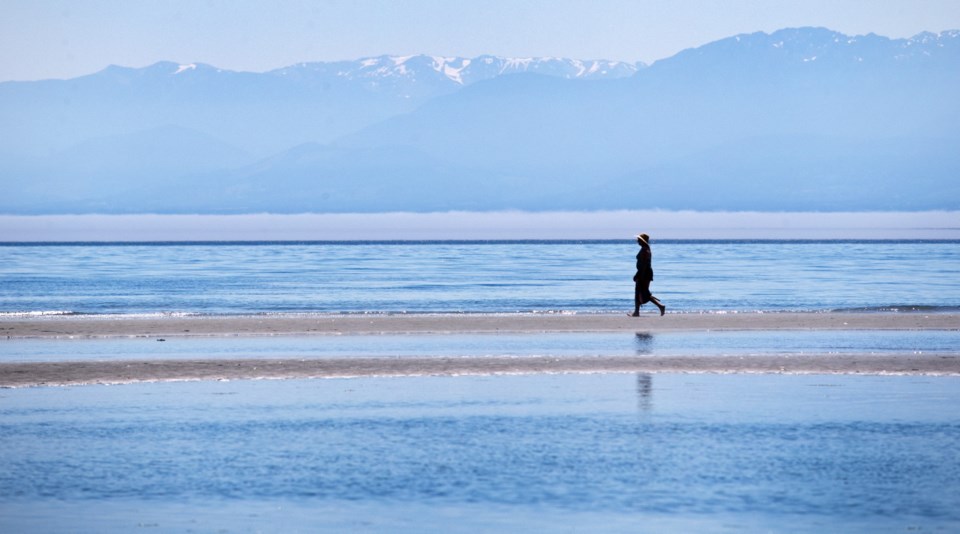For a solid week at the end of March, a dozen Metchosin folk took shifts plunked behind a card table beside the trail to Tower Point.
They sat shivering in the blustery cold, 8 a.m. to 6 p.m., taking a census of who uses the park.
They counted 800 visitors, half from Metchosin, the rest mostly from elsewhere in the capital region, with the odd tourist from Montana or Germany thrown in.
Twenty landscape painters trooped past one day, but far more common were the dog walkers. Lots and lots of dog walkers. Some days there were more dogs than people.
The Friends of Tower Point were gathering info because what they see as a rare window of opportunity has opened: A privately owned piece of undeveloped waterfront is up for subdivision. They want a piece of it added to the park.
Good luck with that.
The dilemma the Friends face is the same one faced throughout the capital region: no money for new parks anywhere.
The Capital Regional District fund that bought $48 million worth of regional parks between 2000 and 2010 is tapped out. It’s still replenished with $3.7 million from property taxes annually, but since 2010, the money has gone to cover that year’s decision to spend $18.8 million to save land next to the Juan de Fuca Trail from development. A financial crisis at its regular funding partner, The Land Conservancy of B.C., left that organization unable to pitch in.
A ray of light is on the horizon, though. The acquisition fund will begin to fill up again in 2016, meaning the CRD can start re-evaluating priorities soon. “This is the pre-phase of getting out of what has been a holding pattern,” said Susan Brice, who heads the CRD parks committee, on Friday. A report on the fund is due April 15.
In the meantime, though, there’s nothing in the kitty when something like the Metchosin situation pops up.
Tower Point is part of Witty’s Lagoon Regional Park, though it’s separated from the main piece of that property by Parry Bay. You can walk across the sand from Tower Point to Witty’s if you catch the tide right, but if you catch it wrong, you’ll find yourself wading back through chest-deep water with a kid on your shoulders.
Next to Tower Point is the piece of private land that is up for subdivision into nine one-acre lots. The Friends know buying it all would be too expensive, but hope there’s a way to add some of the property. They say Metchosin council has the right to take five per cent of the land as park, which they envision as an 11-metre-wide swath of foreshore. Mayor John Ranns says it’s not that straightforward; it might be the developer’s option to offer cash instead.
Something must be done as development of the old Colwood gravel pit increases the area’s population, says the Friends’ Ken Farquharson. “There’ll be incredible pressure on this accessible and popular little park.”
That’s a wee bit ironic in that 15 years ago, Metchosin sued Colwood in an attempt to force the addition of a Dallas Road-like waterfront park along the gravel pit lands. Metchosin argued that the eventual creation of such a park had been one of the conditions of the gravel pit’s approval in 1973, that it was a promise made by the provincial government to the entire area. To make a long story short, Metchosin lost the court case.
In the past, Tower Point might have been one of those situations in which the TLC would nimbly make a deal (though, given the price of waterfront, it might also have sought more bang for its buck elsewhere). For a decade, the non-profit and the CRD worked as a team, buying up the region’s leafy bits before the bulldozers moved in. (Note that of that $48 million spent buying parkland, $13 million came from the CRD’s partners, not just TLC but the likes of the Nature Conservancy of Canada and conservancies on Pender Island and Salt Spring Island.)
Despite the TLC’s troubles, Brice thinks the legacy will be valued a century from now. “There have been some special places saved.”
It just might be a while before they can save any more.



